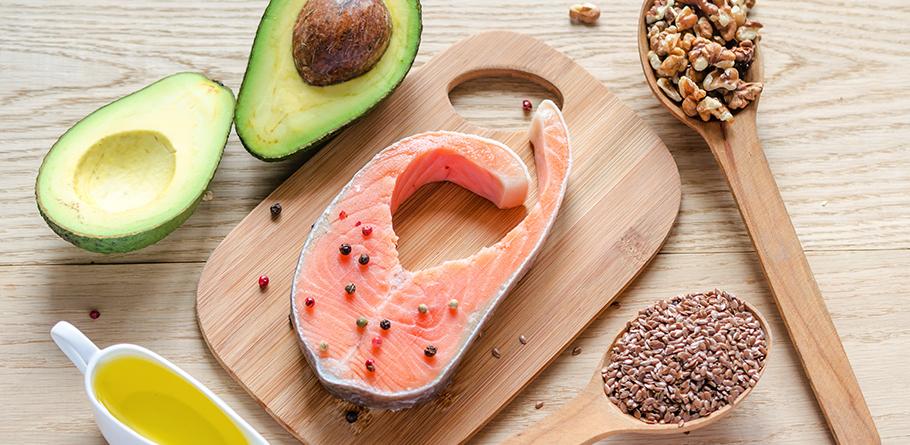Omega 6 is a class of polyunsaturated fats from the fatty acid family. Our body is unable to produce on its own, this is why eating a diet rich in omega 6 foodsis important. Its presence is important because it aids in the healthy development of the human body, e specially the human brain. Apart from that, it helps greatly with hair, bone, nail and skin growth, regulates your metabolism and helps you maintain a healthy reproductive system. A lack of Omega 6 in your body could lead to various types of cancers, autoimmune diseases, heart problems and even inflammatory issues.

Foods Rich in Omega 6
Mentioned below are some of the most important omega 6 foods.Whether you’re a vegetarian, vegan or an omnivore, you will find that your dietary needs can easily be taken care by including many of the food items written as follows:
- eggs
- margarine
- soy milk
- pasteurized dairy products
- many types of baby foods
- fruit juices
- hempseed and hempseeds oil
- fish oil
- grapeseed oil
- nuts including pignolia (pine) nuts and pistachios
- peanut butter
- certain cereals
- yogurt
- flours
- bread
- acai
- borage oil
- flaxseeds and flaxseed oil
- cottonseed oil
- chia seed oil
- primrose oil
- wheat germ oil
- canola oil (rapeseed)
- green leafy vegetables
- raw walnuts & walnut oil
- soybean oil
- corn oil
- pumpkin seeds
- sunflower seeds and sunflower oil
The oil mentioned above may be high in omega 6 but may also be high in calories/refined oils. Please check your labels carefully before purchasing omega 6 foods.
Health Benefits of Omega 6
 If the benefits of omega 6 have made you curious, well, we’ve compiled a detailed list of just a few of the many advantages that omega 6 holds for our bodies:
If the benefits of omega 6 have made you curious, well, we’ve compiled a detailed list of just a few of the many advantages that omega 6 holds for our bodies:
- Helps with premenstrual syndrome (PMS): Now, there is no conclusive scientific evidence for this, so take it with a grain of salt. Certain women have reported getting relief when they experience PMS symptoms like anxiety, mood swings, bloating, irritability and tenderness of their breasts.
- Diabetic neuropathy: Gamma linolenic acid (GLA), a type of omega 6 acid, has shown that diabetics who take GLA for a period of at least half a year show good blood sugar control and reduced symptoms of nerve pain.
- ADHD (Attention Deficit/Hyperactivity Disorder): Clinical studies have shown that children who suffer from ADHD have lower levels of omega 3 and omega 6 fatty acids in their bodies. Now this is not to say that ingesting omega 6 foodswill completely prevent you from developing ADHD, but it will definitely reduce your chances because these foods will encourage the growth of a healthy brain.
- Rheumatoid arthritis: Preliminary evidence has shown foods rich in Mega 6 and omega 3 help reduce typical symptoms of Rheumatoid Arthritis, like morning stiffness, swelling and pain. However, it would take anywhere between 1 and 3 months for the benefits to actually appear, meaning that you would have to be consistent with your intake of omega 6 foodsor supplements. However, there is no proof regarding the slowing down of the arthritis itself.
- Good for your bone health: Continued intake of Gamma-linolenic acid has been shown to reduce bone loss and increase bone density. This was thanks to a controlled study conducted between a group of subjects given a placebo and the other group given GLA supplements. Needless to say, the latter displayed improved bone density and less bone loss as compared to the placebo subjects, who showed none of these changes.
What Are the Symptoms of Omega-6 Deficiency?
The lack of omega 6 in our body is a serious issue, so if you start showing any of the symptoms mentioned below, immediately consult your doctor:
- Miscarriage
- Irregular heart beats
- Growth retardation
- Dry skin
- Unstable mood
- Dry glands
- Eczema-like skin eruptions
- Hair loss
- Sterility (in men)
- Dry eyes
How Much Omega 6 Should You Consume Daily?
Now this is a very subjective discussion, mostly because your intake depends highly on your age, physical condition, as well as your medical condition. For example, if you have diabetes then you’re suggested to take no more than 480mg of GLA daily. If you’re experiencing PMS, then an amount as high as 4000mg of GLA might be recommended to you. This is why it’s always best to consult your doctor instead of deciding such an important factor on your own.
What Are The Side Effects Of Omega 6?
Generally speaking, there isn’t much of a health hazard if you go overboard with your consumption of omega 6 foods.But you have to exercise precautions and always discuss your intake with your doctor. For example, if you’re prone to seizures, your doctor might suggest a very low intake of omega 6. IF you’re pregnant, your doctor might ask you to avoid GLA foods as they are known to induce an early labor.
So on, and so forth.